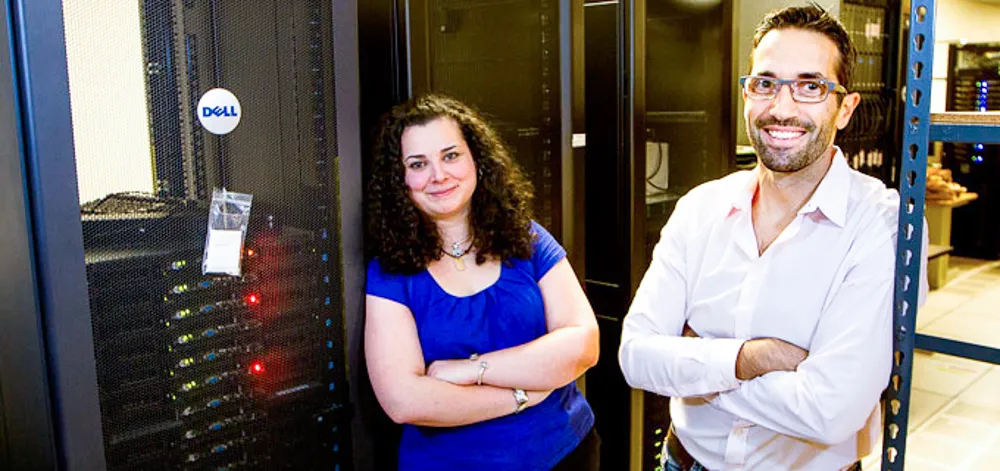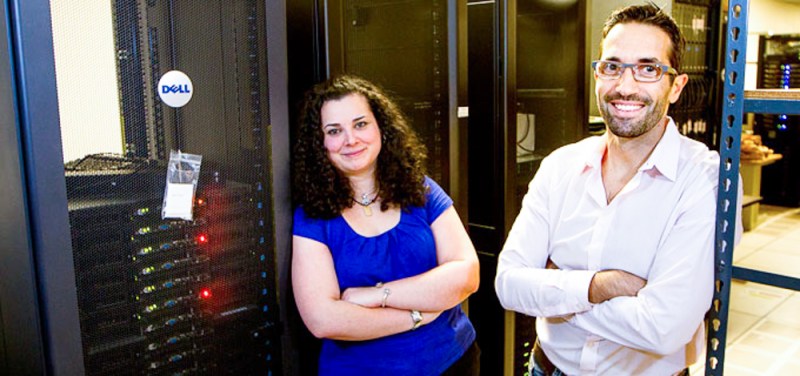
Researchers at Stanford have developed software that could increase the efficiency of cloud computing by eliciting more work from the available infrastructure at large-scale data centers.
The tool, named Quasar, uses techniques similar to Amazon and Netflix’s recommendation algorithms to determine the amount of computing resources that an application requires to run.
Researcher Christina Delimitrou M.S. ’12 Ph.D. ’17 emphasized the problems with current methods of allocating resources, which require internal users to specify the amount of resources needed for their application. According to Delimitrou, statistics from companies like Google, Microsoft and Twitter suggest that people tend to overestimate their needs by a factor of 10.
“If you measure the utilization [of the current system], it’s at around 10 to 20 percent, which means that about 80 percent of the computing power that you could be getting out of the machines is being wasted,” Delimitrou said.
Instead of asking users how many resources they need, Quasar asks people to specify how fast they want their application to run. The software then translates that performance target into resources based on data from similar applications.
“[Quasar] uses the techniques that are similar to what recommendation systems or data mining systems use to recommend movies or items on Amazon,” Delimitrou said. “Instead of recommending movies to various users, we recommend resources to incoming applications.”
Christos Kozyrakis, associate professor of electrical engineering and of computer science, worked on Quasar as the other primary researcher. He wrote in a statement to The Daily that the software reduces the costs of cloud computing without affecting application performance.
“It can help the operators of cloud computing facilities serve more customers and more applications,” Kozyrakis said. “Quasar increases the cost-effectiveness of these facilities by two to three times.”
Although implementing Quasar on a wide scale would require a changeover on the part of companies, Delimitrou explained that the shift would ultimately make cloud computing more accessible for users.
“It makes it much easier for the user because he doesn’t have to worry about how any resources do I need, if I specify X resources will I satisfy my performance constraints, if I ask for too many will my system be underutilized,” Delimitrou said. “I think it can be an easy transition.”
Kushagra Vaid, general manager for cloud server engineering at Microsoft, explained that efficiently managing cloud computing resources has in fact posed a challenge for data centers.
“[Efficient scheduling] is a big challenge that’s very hard to solve,” Vaid said. “Usually what happens is it’s hard to understand the nature of the applications and how they consume the resources…I haven’t seen anything like [Quasar] outside of the big cloud computing providers.”
According to Vaid, Quasar will preclude companies from initially needing to purchase new servers to handle more applications. He also noted the importance of the software for companies that may not necessarily want to use a public cloud.
“[Big IT departments] want to run [computing] in their own data centers, but they don’t have the sources to be able to allocate the resources efficiently so they end up buying a lot of extra hardware,” Vaid said. “That’s where the opportunity exists for Quasar.”
Delimitrou explained that in the near future they hope to integrate the software with an existing system like Apache Mesos, a cluster manager that handles aspects of resource scheduling in addition to efficiency.
“We are talking with them to see how we can integrate some of these techniques on top of Mesos,” Delimitrou said. “It’s a relatively small codebase, and it’s actually used by Twitter and a few other large companies so we would be able to see the efficiency gains in a large system.”
According to Delimitrou, the researchers are also working on how to handle a hybrid cloud to accommodate situations in which a user runs an application both on his own machine and on a public cloud. Quasar’s primary short- and long-term goals include, according to Kozyrakis, “scaling Quasar to cloud facilities with tens of thousands of servers,” and, longer-term, “manag[ing] applications that span multiple cloud facilities, public and private.”
“Of course, we are exploring ways to put Quasar in the hands of cloud computing operators as soon as possible,” he concluded.
Contact Kylie Jue at kyliej ‘at’ stanford ‘dot’ edu.
